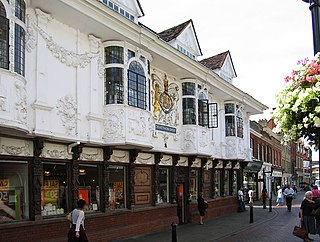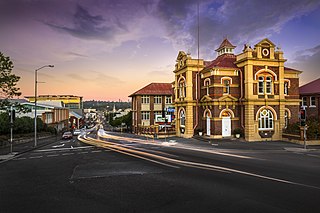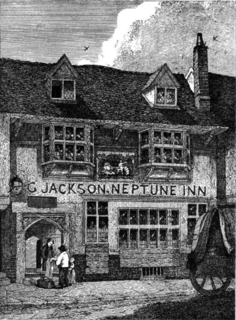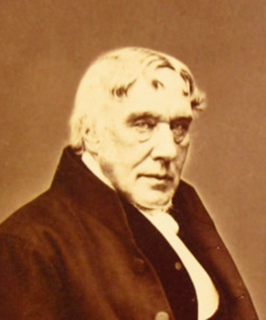Related Research Articles

Jean Ingelow was an English poet and novelist, who gained sudden fame in 1863. She also wrote several stories for children.

Ipswich railway station is on the Great Eastern Main Line in the East of England, serving the town of Ipswich, Suffolk. It is 68 miles 59 chains (110.6 km) down the line from London Liverpool Street and, on the main line, it is situated between Manningtree to the south and Needham Market to the north.

Woolverstone Hall is a large country house, now in use as a school and available at times as a function venue, located 5 miles (8.0 km) south of the centre of Ipswich, Suffolk, England. It is set in 80 acres (320,000 m2) on the banks of the River Orwell. Built in 1776 for William Berners by the architect John Johnson of Leicestershire, it is an outstanding example of English Palladian architecture and is a Grade I listed building while associated buildings are Grade II. From 1951 to 1990, it housed Woolverstone Hall School, a boarding school operated by London County Council (LCC).

The Ancient House, also known as Sparrowe's House, is a Grade I listed building dating from the 15th century located in the Buttermarket area of Ipswich, Suffolk, England. In 1980 the building was acquired by Ipswich Borough Council.

Martin & Newby was the oldest shop in Ipswich, Suffolk until it closed down in June 2004. The business was established in Fore Street in 1873 and was based around 5 departments: Ironmongery, Electrical, Domestic, Gardening and Tools. The shop gave a very traditional personal service, it was reported by local press that the shop closed down because they could not compete with DIY Superstores such as B&Q and the increasing range of products offered by supermarkets.

St James the Less is a Church of England Parish Church in Pimlico, Westminster, built in 1858–61 by George Edmund Street in the Gothic Revival style. A grade I listed building, it has been described as "one of the finest Gothic Revival churches anywhere". The church was constructed predominantly in brick with embellishments from other types of stone. Its most prominent external feature is its free-standing Italian-style tower, while its interior incorporates design themes which Street observed in medieval Gothic buildings in continental Europe.
This is a survey of the postage stamps and postal history of British Bechuanaland.

Court Street is located in the Financial District of Boston, Massachusetts. Prior to 1788, it was called Prison Lane (1634–1708) and then Queen Street (1708–1788). In the 19th century it extended beyond its current length, to Bowdoin Square. In the 1960s most of Court Street was demolished to make way for the construction of Government Center. The remaining street extends a few blocks, near the Old State House on State Street.

The Ipswich Docks, Ipswich wet dock and the wet dock,) are a series docks in Port of Ipswich located at a bend of the River Orwell which has been used for trade since at least the 8th Century. A wet dock was constructed in 1842 which was 'the biggest enclosed dock in the United Kingdom' at the time. A major regeneration of the area has taken place since 1999.
Tollemache Breweries Ltd. was a brewing company which originated in Ipswich in 1888 and became a major brewer in East Anglia before merging with their rival Cobbold and Co. to form Tolly Cobbold in 1957. The brewery was founded by three sons of John Tollemache, 1st Baron Tollemache - Douglas, Stanhope and Mortimer Tollemache - who bought the Cullingham Brewery in Upper Brooke Street. This had been established as a Steam Brewery in 1856 by Charles Cullingham. Douglas Tollemache was keen to ensure a high quality product.

Queen Victoria Silver Jubilee Memorial Technical College is a heritage-listed technical college at 88 Limestone Street, Ipswich, City of Ipswich, Queensland, Australia. It was designed by architect George Brockwell Gill and built from 1897 to 1937. It is also known as Ipswich TAFE College and Ipswich Technical College. It was added to the Queensland Heritage Register on 21 October 1992.

Rockton is a heritage-listed villa at Rockton Street, Newtown, City of Ipswich, Queensland, Australia. It was built from 1855 onwards. It was added to the Queensland Heritage Register on 21 October 1992.

Neptune Inn is an historic public house located in Fore Street, Ipswich, Suffolk, England. The building was originally built around 1490 and is grade II* listed.

Richard Dykes Alexander was a businessman and philanthropist based in Ipswich, Suffolk.

St Clement's Church, Ipswich is a redundant church. The church is one of twelve medieval churches in Ipswich, six of which had been declared redundant by the 1970s. In the twenty-first century it was taken over by Ipswich Historic Churches Trust.
William Dillwyn,, was a British American-born Quaker of Welsh descent, active in the abolitionist movement in colonial America and after 1774, Great Britain. He was one of the twelve committee members of the Society for Effecting the Abolition of the Slave Trade when it was formed in 1787.

The Steam Packet Inn was a public house located at 2/4 Duke Street, Ipswich, Suffolk, England. It closed on 18 September 1960. The building had been owned by Cobbold Brewery but after closure it was sold to Eastern Counties Farmers (ECF). The Burns family then lived there, Mr Burns being employed by ECF.
Charles Foote Gower was an English soap manufacturer based in Ipswich. He was a significant businessman in that town.

The Duke of Sussex, Acton Green is a public house, opened in 1898, in the northern Chiswick district of Acton Green. It is prominently situated on a corner facing the common. The Grade II listed building is "elaborately decorated" to a design by the pub architects Shoebridge & Rising.
References
- ↑ The Ipswich Society (12 January 2015). "CHARLES WHITFIELD KING (1855-1930) Morpeth House, 99 Lacey Street, Ipswich". Flickr. Flickr. Retrieved 8 October 2022.
- ↑ van loon, Borin. "Ipswich Historic Lettering: Morpeth House". www.ipswich-lettering.co.uk. Borin van Loon.